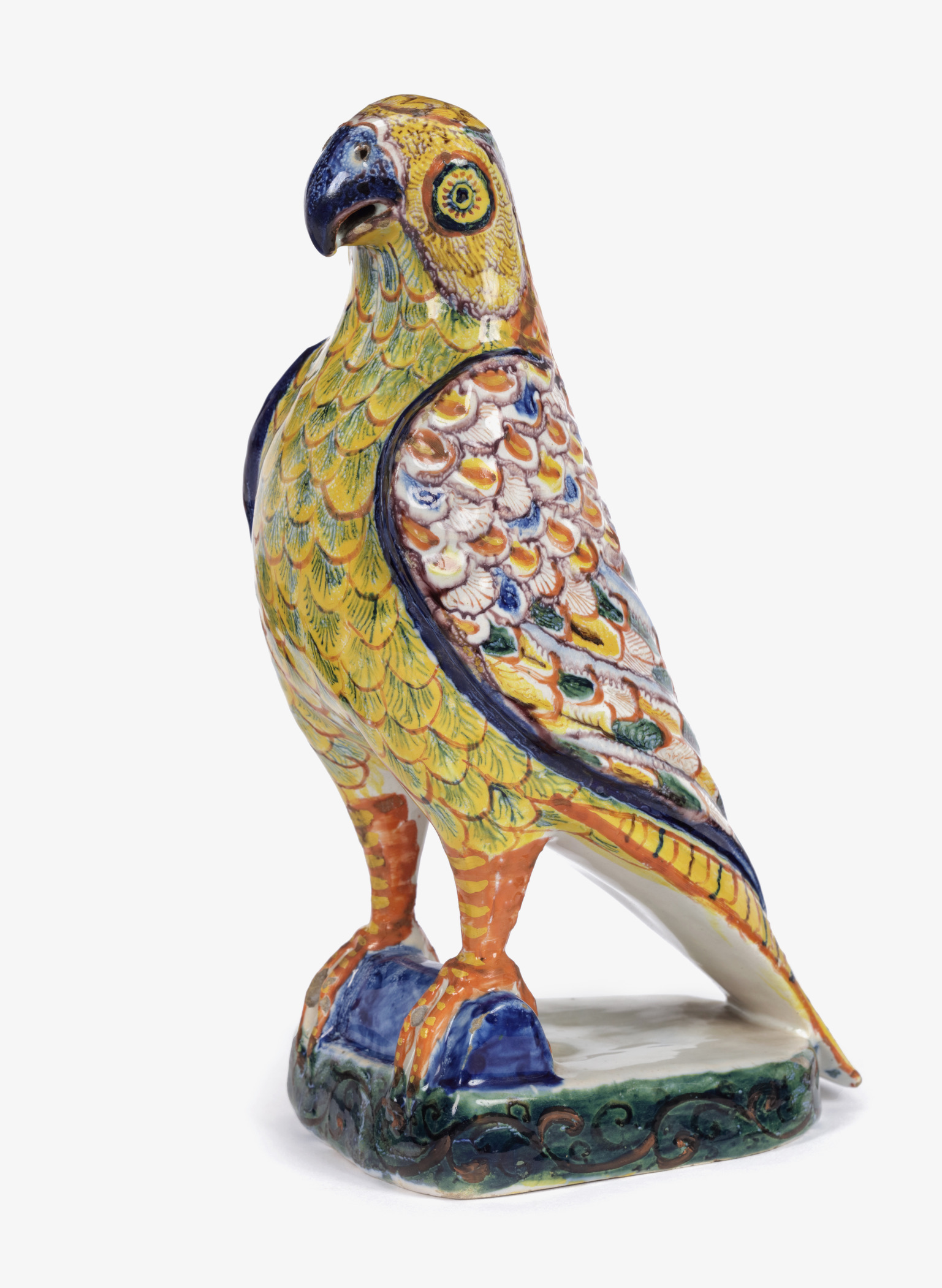![]()
Images on this website are licensed under a
Creative Commons Attribution-NoDerivs 3.0 Unported License.
OBJECT
•D2355. Polychrome Figure of a Parrot
Delft, circa 1775
Painted with blue and orange delineated yellow plumage on its head, breast and tail, and yellow, orange, blue, green and manganese plumage on its wings, its blue beak slightly open with two pierced holes, modeled standing with its yellow and orange feet clasping a blue perch on a shield-shaped base with white top and the green sides patterned with iron-red scrolls.
DIMENSIONS
Height: 20.5 cm. (8.1 in.)
PROVENANCE
Aronson Antiquairs, Amsterdam, 2004; Dutch Private Collection;
LITERATURE
Described and illustrated in Aronson, Dutch Delftware, The Günther Grethe Collection, 2004, p. 150, no. 172
NOTE
The exoticism of parrots have remained since the eighteenth century when the colorful birds were popularly used as models in both porcelain and pottery. Like many Delftware objects, the ceramic parrots were first inspired by Chinese porcelain wares from the Kangxi period (1662-1722). The porcelain parrots found widespread appeal in both China and Europe for their colorful and exotic appearance, the earliest pieces often in the famille verte palette. Once the figures reached the Netherlands, they found a ready group of buyers. The bird was introduced into the Delft pottery repertoire, joining the more common animal imagery of dogs, cows and horses. The varying colors and shapes of parrots provided the Delft painters with many options for ornamental decoration.
Delft parrots were produced from the beginning of the seventeenth century until the end of the eighteenth century, showing their great popularity, as is discussed in Lunsingh Scheurleer 1984, p. 132. The basic form was a naturalistic rendering of a parrot, but some bird figures, as in the present form, were modeled after the porcelain blanc de Chine hawks, illustrated in exh. cat. Blanc de Chine, 1985, p. 15, no. 19. With their strong legs, high chest and claws, they appear sturdy and serious. However, the plumage is painted with bright colors and patterns not seen in nature, making these forms beautiful ornaments for the interior. The Delftware birds were produced in several models, and are often seated on an oval base or a naturalistic pierced rock. Other examples are seated on a branch or in a ring that could be suspended from a higher attachment point.
SIMILAR EXAMPLES
A parrot of the same model with the similar type of base is illustrated in Lavino, p. 43 and p. 46, one is illustrated in Morley-Fletcher and McIlroy, p. 219, no. 8, in Aronson 2007, p. 76, no. 58 and in Aronson 2017, p. 105, no. 66. Another pair of parrots dated 1784 and perched on a similar base, but on a different model, is illustrated in Van Dam 1991, p. 139, no. 67, who on page 138 comments that “objects such as these were probably made only to order in the late eighteenth century, and no doubt this is why they are dated”.









